As the name implies, commercial HVAC systems provide businesses with heating, ventilation, and air conditioning. However, for experts in indoor ag and cannabis facility design, it has become apparent that the traditional HVAC acronym fails to include an important pillar of the mechanical system; dehumidification.
For many years, industry professionals, including ourselves, sought to ensure dehumidification was included in the discussion whenever talking about grow room HVAC. We’d often simply tacked it onto the end of the acronym, resulting in the lengthy “HVAC and dehumidification.” The problem here was not just that “HVAC and dehumidification” is a mouthful, but its structure also portrays dehumidification as an afterthought or a less important piece of the mechanical system.
Over time, more and more industry climate experts and growers have adopted the term “HVACD” (as well as punctuated variants including “HVAC/D” and “HVAC-D”).
Before we continue, an important note here is that language is subjective, and while not every mechanical company that is qualified to provide services or equipment for indoor cultivation applications strictly uses this terminology, they will understand its meaning. This article is less about which terms a provider prefers, and more so about how they approach their mechanical design.
HVACD Challenges in Agriculture
Plants transpire, and therefore produce high levels of humidity which need to be properly maintained to prevent damage to your crop – and this applies to everything from cannabis to lettuce to herbs and everything else you can grow indoors.
Understanding VPD and Transpiration Rates
Transpiration is the process in which water moves through the plant and is eventually released as water vapor into the atmosphere. This process is similar to that of perspiration in humans. Transpiration rates help measure the amount of moisture plants lose over a period of time. Transpiration rates are affected by vapor pressure deficit (VPD). Vapor pressure defines the pressure at which water changes from a liquid into vapor. Thus, VPD illustrates the difference between the vapor pressure within a plant and in the atmosphere around it.
Too much of a difference in vapor pressure (a high VPD), and your plants will begin transpiring water faster than they can replace it. Too little of a difference, (a low VPD), and they will hold in too much water, hindering photosynthesis, or even causing them to rot. Consistent, well-maintained VPD levels at each stage of growth will help minimize the stress on your plants. And because VPD is determined by temperature and humidity, your HVACD system must be designed to maintain a consistent balance of the two so that you can achieve your desired VPD range.
There are multiple different temperatures and humidities that can achieve the same VPD, and different crops have different “optimal” VPD. For instance, tropical plants will like a lower deficit, and plants that thrive in arid natural conditions will like a higher VPD. Interestingly, dewpoint temperature (the temperature at which water vapor in the air condenses is into liquid), which is essentially the opposite of VPD, is the most relevant number that will define the effectiveness of dehumidification within the HVACD system. Similar to VPD, multiple different humidity and temperature combinations may result in the same VPD. Below, we’ve overlain the VPD chart on the psychrometric chart utilized by mechanical designers of HVACD systems. You can see that, depending on the temperature and humidity selections, the same VPD may have wildly different dewpoint temperatures—which also means wildly different HVACD system performance and sizing requirements.
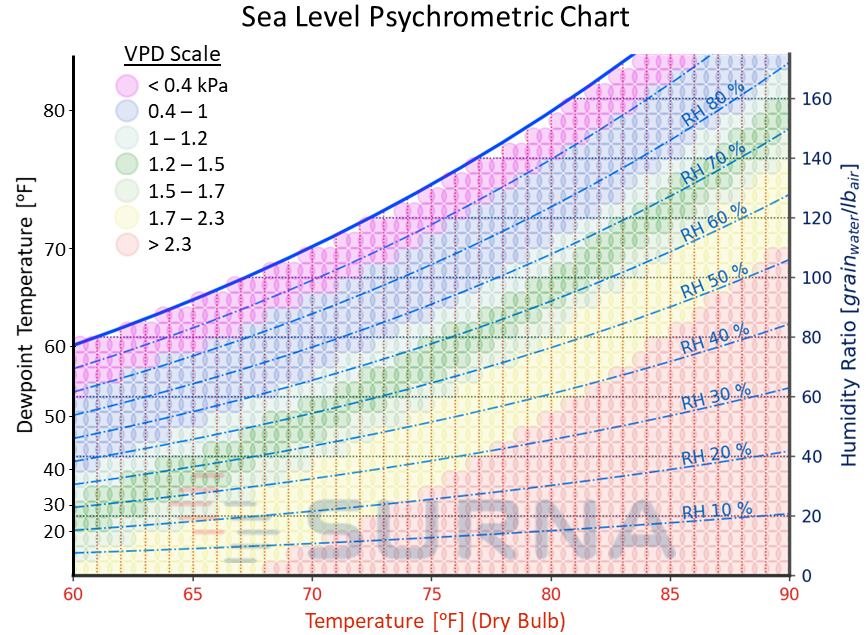
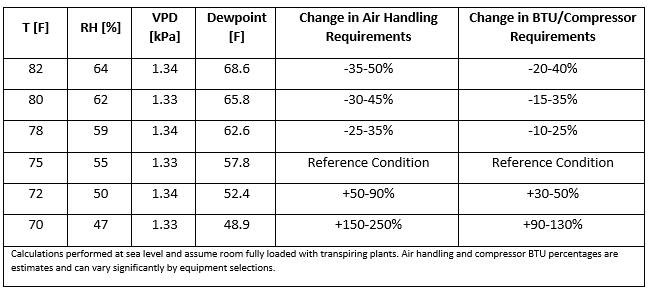
Hiring HVACD Experts in CEA
To help guide your decision making, and avoid issues related to achieving the target VPD, or overspending on your HVACD system, you will need to hire a qualified mechanical engineering team with prior experience working successfully with other indoor cultivators. Most engineers will provide a design and recommend equipment based on their specs. The onus is then on you to procure the equipment and have it installed.
Few engineering firms can also supply you with equipment. This option is appealing for several reasons. To start, you have less work to do since your engineer acts as a sort of one-stop-shop for your mechanical system. Additionally, if the firm specializes in CEA, the equipment they provide may also be specially designed to be suited for indoor ag applications. You should still thoroughly review your equipment options and obtain multiple quotes for comparison before making this assumption.
Surna Cultivation Technologies is unique in that we offer both a la carte options (mechanical engineering, HVACD equipment, climate controls, and more) as well as the ability to provide comprehensive facility design from floor plans and architectural design to climate control systems and beyond. Not only this, but our business is modeled to provide as many options as possible to ensure we can supply a great fit for every facility regardless of budget, size, or location. Other engineering and HVACD equipment suppliers will create a design that fits the specs of the equipment they sell. We take the reverse approach and present equipment options that are best suited for your design. The result is a solution that serves your needs, not the limitations of your vendor.
HVACD Solutions
There are a number of approaches your engineer can take when designing your mechanical system. Each technology offers its own benefits and drawbacks, so it is important to take aspects of the project into account such as budget, size, layout, and location. Some climate control options will provide a more energy efficient solution than others, and some may be necessary in certain situations but not in others. And especially nowadays, even lead times for equipment can have a big impact in your decision. The best HVACD designer will present you with their recommendations and base their design on meeting your unique goals.
Standalone Dehumidification Systems
In standalone dehumidification, humidity and temperature are controlled separately. Yes, dehumidification is a byproduct of cooling. When humid, warm air is cooled, the water vapor condenses into liquid and is drained out of the room. However, your cooling system will typically not be able to remove enough moisture on its own to maintain your ideal VPD if it does not have integrated humidity control. And especially during lights-off, if your cooling system is not running without a sensible load from cultivation lighting, humidity levels may continue to rise unmitigated. You could end up with a cooler grow room with high humidity levels, which would not be good for your yield.
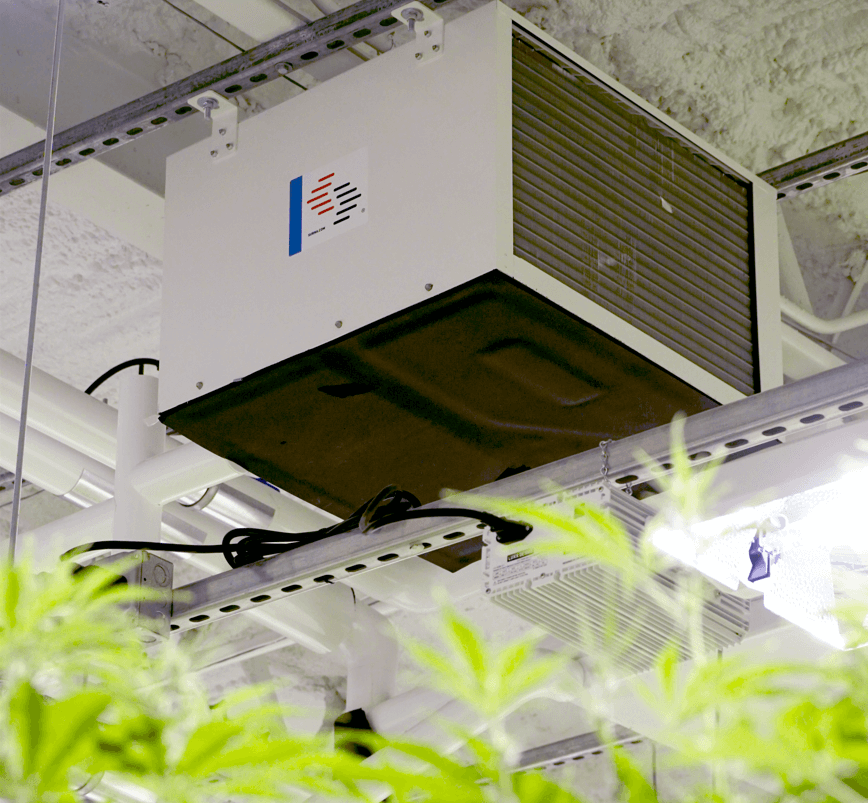
This is where standalone dehumidification comes in. As the name implies, this is achieved by a separate unit; a dehumidifier. These can be hung from the ceiling, wall-mounted, or even temporarily used on the ground in a pinch. These still work by compressing humid air to remove its moisture, but the warm air is returned to the space. In fact, dehumidifiers generate a small amount of heat that must be then removed from the cooling system. Without going too deep into how dehumidification works, we can at least tell you that while standalone dehumidification can be a practical option for managing humidity, it requires two systems to run separately to achieve your desired setpoints – which is not the most energy efficient approach.
Integrated Dehumidification Systems
Conversely, integrated dehumidification accomplishes both temperature and humidity control within the same equipment. With integrated systems, the dehumidification, heating and cooling functions are achieved with the same piece(s) of equipment, where chilled water or refrigerant pressures and volumes, and fan speeds, are modulated to provide dehumidification when cooling isn’t called for, and to reheat the space (usually by recovering heat, while they may be supplemented with additional heaters in some cases) to ensure that dehumidification is achieved without bringing down the temperature in the room.
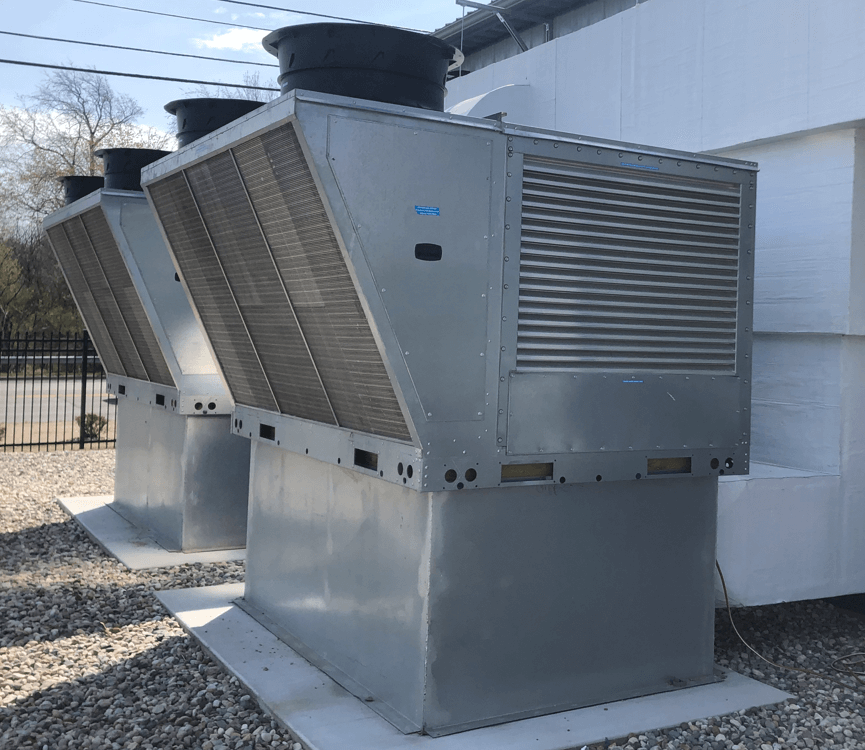
These systems are generally more precise and may require less electrical infrastructure than standalone systems. However they can come with a higher price tag and may require the use of controls that are more sophisticated than the on/off sequences most standalone equipment utilizes.
Airflow Systems
Indoor cannabis grows and indoor food producers need proper airflow systems to keep the humidity levels and temperatures in the grow room consistent and avoid pockets with inconsistent parameters. If the humidity is too high, the plants will likely suffer from mildew, and rot.. If the humidity is too low, the plants will likely suffer from dehydration and nutrient deficiencies due to overly rapid transpiration. In both cases, the plants may be more susceptible to pests and pathogens as well, and the cultivator may see different results from plants in the same room.
There are a number of methods for maintaining a homogenous airflow within a grow room. Your mechanical designer should take into account factors such as in-room fan coils, wall-mounted fans, and number of growing tiers and benching layouts. Destratification fans, though sometimes overlooked, can also be a simple but great tool for creating vertical homogenization. CFD (computational fluid dynamics) analysis is a useful tool for modeling the airflow in a densely populated cultivation space, and is a good tool to rely on, although not all mechanical engineering firms offer this service.
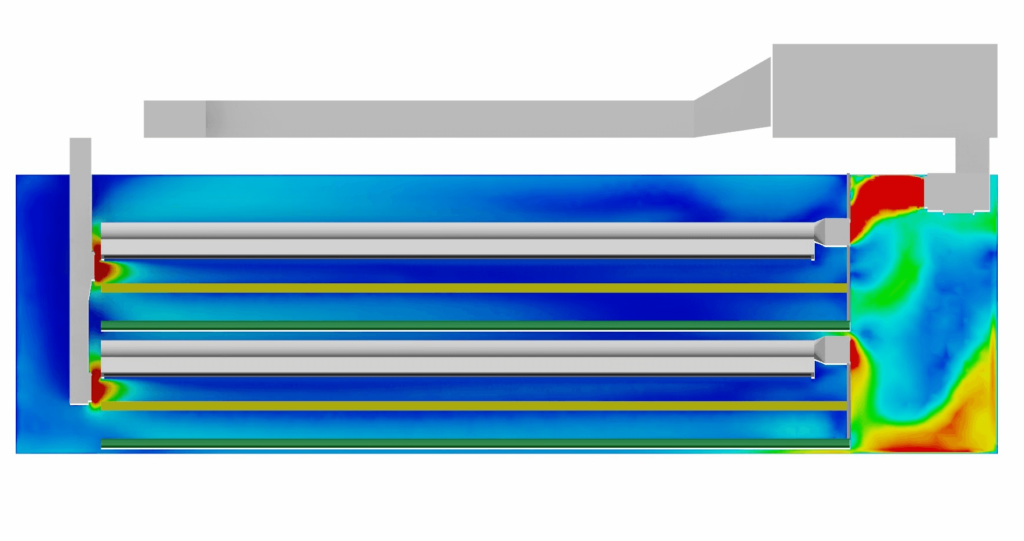
Closing Thoughts
Still not sure about the difference between HVAC and HVACD? Don’t worry. The key takeaway here is that not all climate control is created equally. Look for an engineer with experience in indoor agriculture to help provide you with solutions suited for your farm’s needs.
If you want to know more, you can request further information about Surna’s dehumidification equipment and HVACD engineering services by contacting us today.

